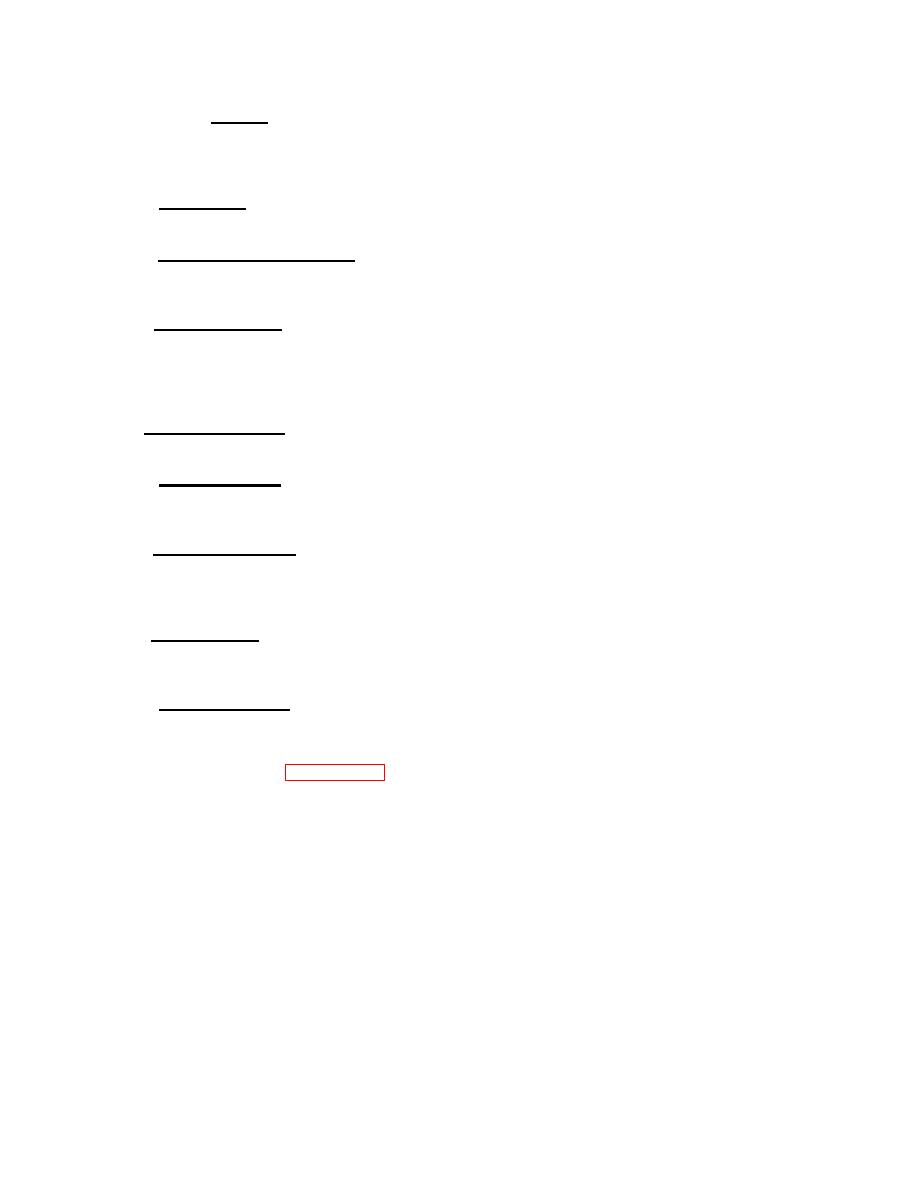
| Tweet |

Custom Search
|
|

|
||
 TM 55-1905-223-24-5
(b) Throttle. The throttle provides a means for the operator to manually control engine speed
above idle as required by varying operating conditions of speed and load. In the fuel pump, fuel flows to the
throttle shaft. At idle speed, fuel flows past the throttle shaft. To operate above idle speed, fuel flows to the
throttling hole in the shaft.
(2) PT Injectors. The injector provides a means of introducing fuel into each combustion chamber. It
combines the acts of metering, timing, and injection.
(3) Fuel Lines and Connections. Fuel is supplied through lines to cylinder heads. A common drain line
returns fuel not injected, to supply tank. Fuel connectors are used between the Inline engine cylinder heads to
bridge the gap between each supply and drain passage.
(4) Shutdown Valve. An electric shutdown solenoid valve with a manual override is used on the fuel
pump. In case of electrical failure, to start the engine, turn the manual knob clockwise to permit fuel to flow
through the valve. To stop the engine, turn the knob fully counterclockwise. For normal operation with the
electric valve, the manual control knob must be turned fully counterclockwise to permit the solenoid to open the
valve when the switch is turned on.
c. Lubricating System. The bowthruster engine is pressure lubricated. Pressure is supplied by a gear
type oil pump located on the side of the engine.
(1) System Operation. Oil is drawn into the pump through an external oil line connected to the oil pan
sump. A screen in the sump filters the oil. Oil is drawn from the pan by the pump, out through a full-flow filter,
and circulates back into the block.
(2) Lubricating Oil Flow. Oil flows from the pump to the filter/cooler, then flows to an oil header through
internal drillings in the gear case. An oil header, drilled full length of block, fuel pump side, delivers oil to
moving parts within the engine. Oil pipes carry oil from the camshaft to upper rocker housings and drillings
through the block, crankshaft, connecting rods, and rocker levers complete the oil circulating passages.
d. Cooling System. The primary function of the cooling system is to remove the heat created by the
engine and its support components. The excess heat energy that is not removed by the cooling system is
carried away by exhaust gases and radiated into the atmosphere.
(1) Coolant Flow Path. Water (coolant) is circulated by a centrifugal water pump mounted on front of
the engine. The water pump is belt driven. Water circulates around wet-type cylinder liners, through the
cylinder heads, and around the injector sleeves. Injector sleeves, in which the injectors are mounted, are
designed for fast dissipation of heat. The engine has a thermostat to control
engine operating temperature. FIGURE 1-6 shows the coolant flow path through the
engine.
1-10
|
||
 |
||